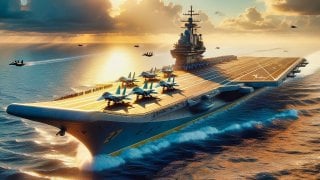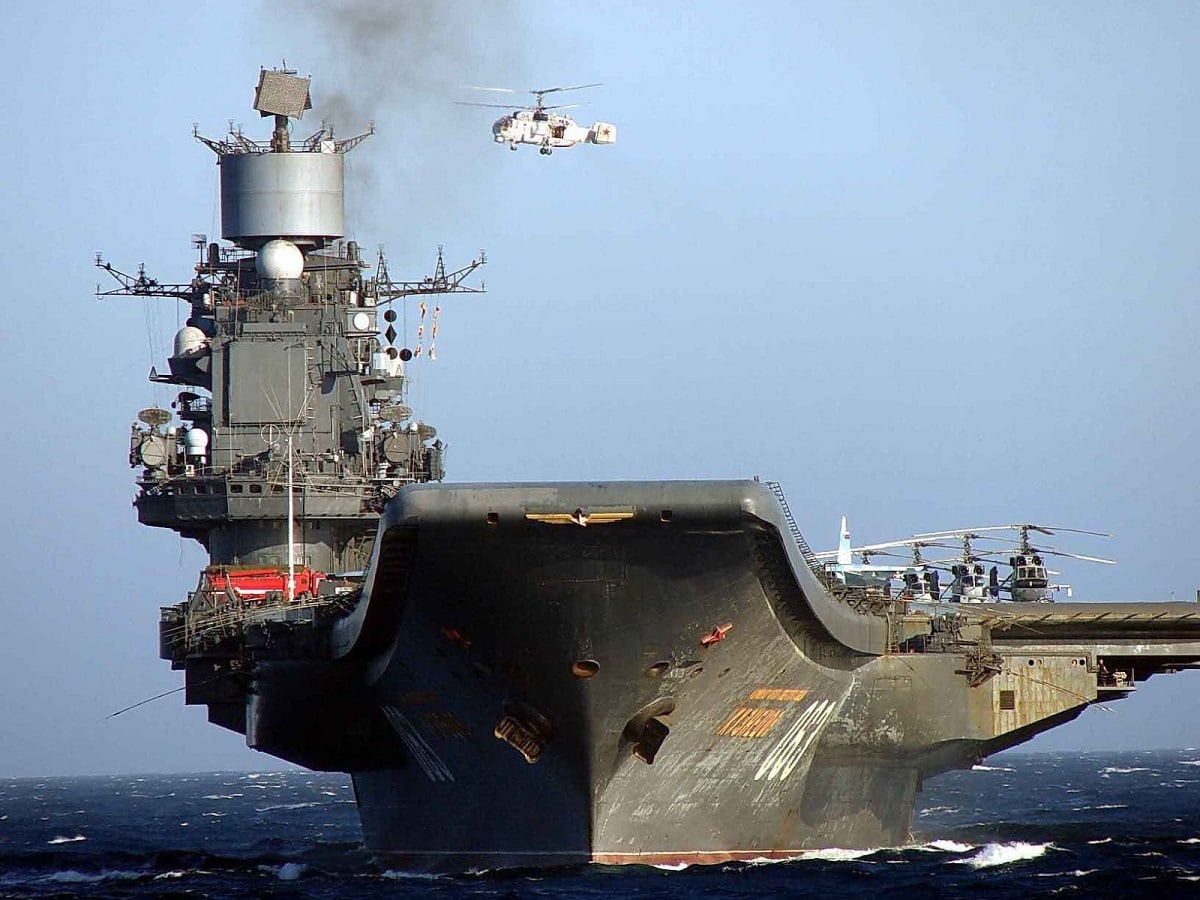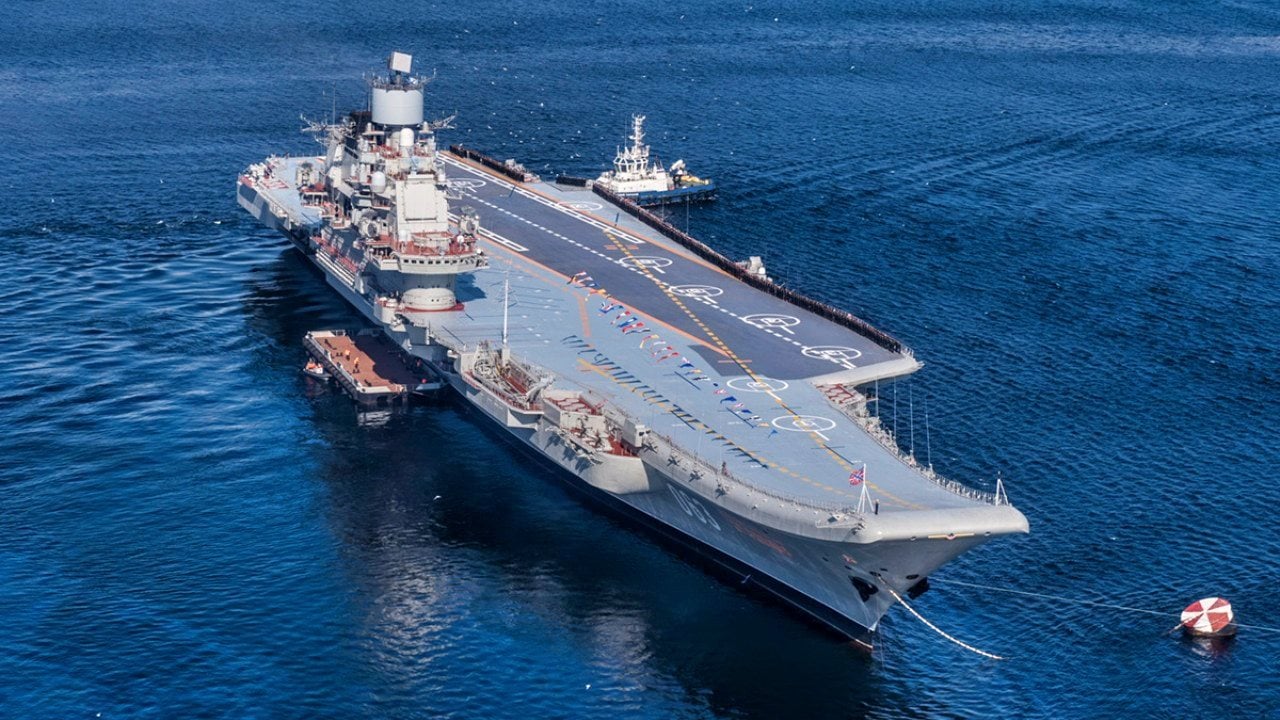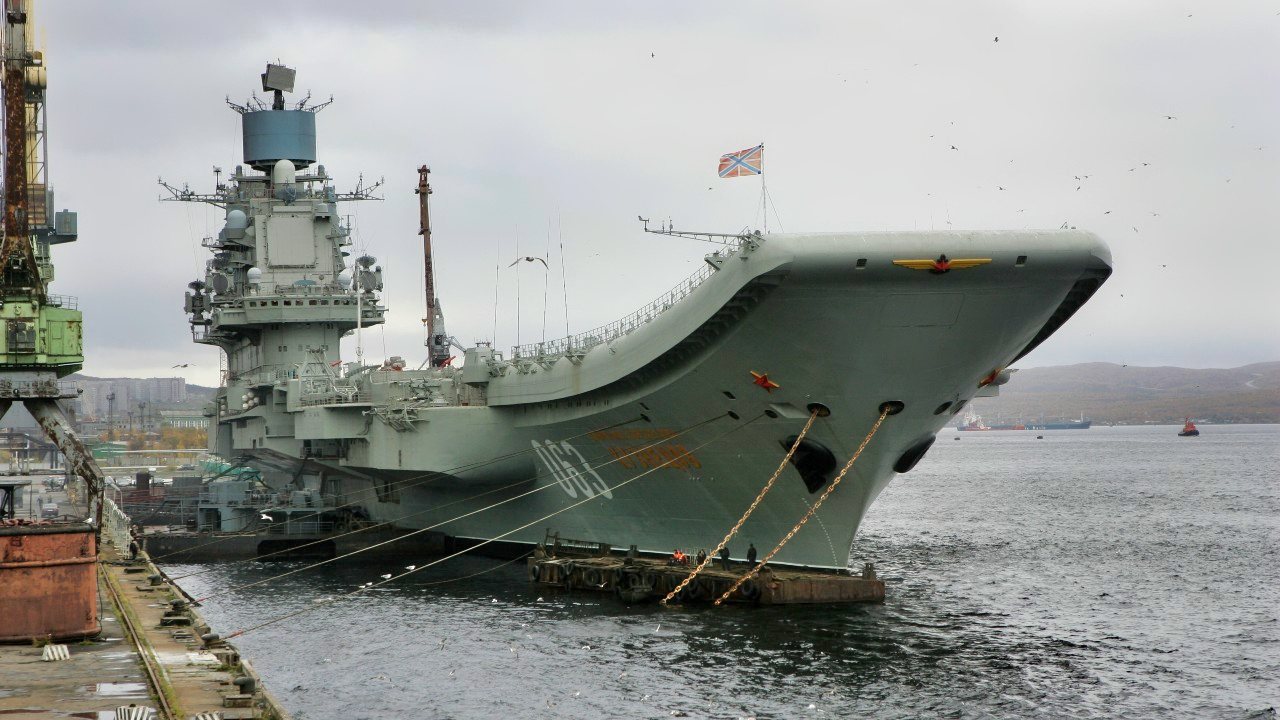Peter Suciu

A question routinely asked by armchair historians is why Russia never built a fleet of aircraft carriers. The short answer only requires that one looks at a map.
Russia may be the largest nation in terms of land mass in the world today, and historically was even larger in the Imperial Russia and Soviet eras, but it has also largely been a land power.
Its naval history has been one of numerous follies, from the Russo-Japanese War (1904-05) when it lost two squadrons including eight battleships sunk and two more capture; to the ongoing war in Ukraine, which last year saw the sinking of the Moskva, the largest warship sunk in combat since the Second World War.
First World War
Following the destruction of the Russian Navy in the Russo-Japanese War, the naval power of Russia was vastly reduced – so much so that it fell from the second-largest navy in the world to the fourth. Yet, Tsar Nicholas II saw a need for a naval force and launched a massive shipbuilding program.
The First World War broke out before the program was completed, but Russia still had a larger navy than its Central Power adversaries. The Russian Navy wasn’t actually able to play that great of a role in the war effort. Its size wasn't the issue, but rather it was one of the geography of Russia.
During the conflict, Russia’s Baltic Fleet was limited in operation due to the proximity of the German High Seas Fleet, yet Russia still scored a victory at the Battle of the Gulf of Riga in August 1915.
Likewise, the Russian Black Sea Fleet was able to control that body of water during the war, even if it was largely unable to take part in any other operations.
The Early Soviet Era
Following the downfall of Imperial Russia after the February 1917 revolution, Russia’s Navy remained in port. The first shots of the October Revolution of that year were fired from the cruiser Aurora – and that led to the Russian Civil War. During that conflict, the Russian Navy was essentially destroyed as a fighting force.
Yet, following the Bolshevik victory, the new Soviet Union saw the need to once again build a navy from scratch.
In the 1920s and 1930s, as the United States, Great Britain, and Japan began to adopt aircraft carriers, the Soviets focused on battleships, cruisers, and destroyers. The truth is that when Germany launched its surprise attack on the Soviet Union in June 1941, it caught the Soviet Navy completely off guard.
It is doubtful that if the Soviets had built any aircraft carriers any such vessels would have played any meaningful role in the "Great Patriotic War."
During the Cold War, Moscow did see a need for having a large and powerful navy – even as it remained very much a land power. However, the Soviets sought to focus on submarines rather than large surface vessels. One factor was that the Second World War had demonstrated that the era of the big gun battleships was essentially over – even as the United States Navy hung on to its four Iowa-class battleships, returning them to service in the 1980s.
The Failed Carrier Efforts
Moscow did see the potential capability that carriers could offer, and there had been attempts to develop such flattops for power projection around the world. This began in the 1960s with the Moskva-class of helicopter carriers (not to be confused with the frigate sunk by Ukraine last year). Two of the planned dozen were produced, but these were not true "aircraft carriers" as they did not carry any fixed-wing aircraft.
The Soviets did go forward with its Kiev-class, of which three were completed and saw service until the early 1990s, while a fourth was rebuilt and sold to India – and is in service as the INS Vikramaditya.

Moscow also produced the Project 1143.5 class of carriers, which included the Admiral Flota Sovetskogo Soyuza Kuznetsov, now Russia's sole carrier; and the uncompleted Varyag, which was under construction when the Soviet Union collapsed in 1991.
It was sold by Ukraine to China and then completed in 2012 as the Type 001 Liaoning.
A planned supercarrier, Ulyanovsk, was also under construction for the Soviet Navy at the end of the Cold War, but it was scrapped following the dissolution of the Soviet Union.
Russia Just Doesn’t Need Aircraft Carriers
Though some in Moscow even today see a potential for a carrier fleet, the war in Ukraine has proven once again that Russia has never needed such warships.

It doesn't have overseas bases to support them, and it lacks the ports from which they can operate – the northern port of Murmansk is ill-suited to a carrier, and the same is true of the Pacific Fleet's home port of Vladivostok.
St. Petersburg and even Kaliningrad in the Baltic Sea are essentially surrounded by NATO member states and in the event of war would come under immediate attack.
Any carrier would be an inviting target.

Sevastopol in the Black Sea is even more isolated, and treaties don't even allow true carriers to transit the Bosphorus – which is why the Soviet Union classified its vessels as aircraft cruisers.
In other words, the short answer again to the question of Russian carriers is one of geography.
Russia has always lacked the facilities to build and maintain carriers – as evidenced by the ongoing saga over the refit of Admiral Kuznetsov, while it simply doesn't have the bases to support such vessels
The final consideration is that Russia may want to project power around the world, but a carrier would still be a bad way to do it. Moscow knows it all too well.
No comments:
Post a Comment